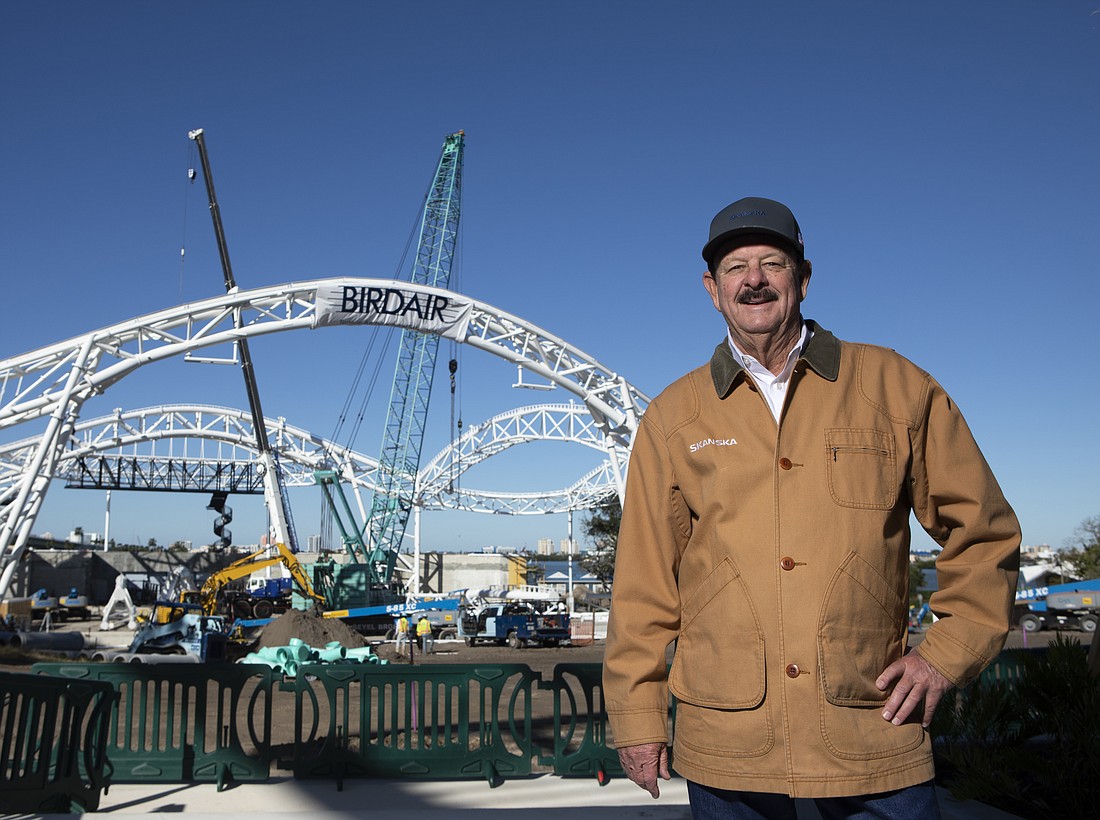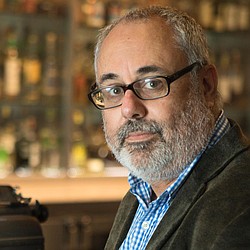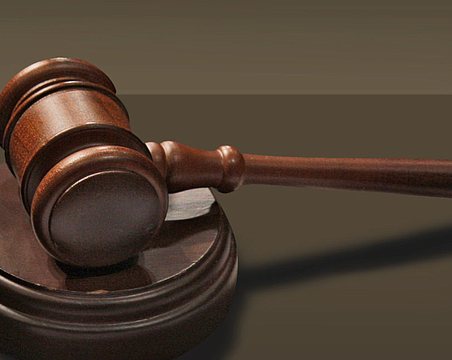While it may seem like hyperbole to say this, the reality is that as the next several generations of Tampa Bay residents visit area parks in the coming years, and reap the benefits of growth in the area, they’ll have one company in particular to thank for the work.
That company is Skanska USA, whose Tampa office is behind the construction of several of the largest public projects in the area, projects that are, or are expected to be, major catalysts for economic growth. These projects include a who’s who of area destinations, such as the St. Pete Pier; Kiley Garden and Julian B. Lane Riverfront Park in Tampa; and Curtis Hixon Waterfront Park, which included the Tampa Museum and the Glazer’s Children Museum.
Skanska USA was founded in 1971 and employs more than 7,300 people. It has more than 30 offices in the U.S., including Tampa, Orlando and Fort Lauderdale. Its revenue in 2021 was $6.4 billion. The U.S. company is part of the Skanska Group, which is based in Sweden and had $17.2 billion in revenue in 2021.
The company’s latest project is Imagine Clearwater, the $84 million waterfront park in downtown Clearwater set to open this summer.
This project is an update to the city’s Coachman Park and will include, like most of Skanska’s parks, amenities beyond what one has typically expected from a park (think ocean-themed play area with an interactive pop-jet water feature). This park is seen by Clearwater residents and community leaders as the first step in what has been a long-awaited revitalization of the city’s dormant downtown.
The driving force behind these projects is Skanska vice president Chuck Jablon. He’s been with the company for 25 years.
Jablon, 73, has been in the construction industry for more than 50 years and looks at the work he does as craftsmanship. And that approach is important, not just because it helps make the public spaces he’s worked on suitable for today’s residents and their grandchildren, but because it’s allowing him to put a stamp on his community.
Jablon is a St. Petersburg native. He remembers going with his mother to the city’s pier back when it was the Million Dollar Pier — one of its many iterations.
To him, getting a chance to work on the new pier, which opened in 2020, and to work on the other projects across the area, provides a sense of pride.
And, while he believes people will be enjoying the fruits of his labors for the next year 100 years, he doesn’t need to go far to see the joy that work brings.
He sees it every day.
“There’s a difference in a park because there’s so much pride (among the workers) because they know they’re going to bring their family there, they know they're going to bring their kids there,” he says. “They know they don’t have to have a lot of money but it’s free no matter what they’re going through in life. They get to go out there and be around water and all those beautiful things. It’s never a bad minute.
“For me, it validates what I’ve been working for my whole life. Building a park, no matter what anybody tells you, is special.”
In a recent interview, several days after a topping off ceremony at Imagine Clearwater, Jablon spoke about his career, the art and science of building parks and more.
As you work on these projects, can you talk about how Lane, Curtis Hixon and Imagine Clearwater came to be what they are?
Our biggest attribute as builders is we help the architects and our client, which are the cities. They all have a budget. And so there’s a big bucket list of things everybody wants. We try to get that whole bucket list. We help them get in on budget.
The value and the benefit of these parks is, again, the catalyst. It’s a transformation of a downtown by a community piece of property. That’s where everybody wants to assemble. That’s where everybody wants to be. So, of course, restaurants, office towers are built. Community centers are built, museums are built. All that develops a downtown.
To me, a real park has water features, it has unique things. And there’s so much attention now being given to these parks, it’s truly a work of pride and passion and quality.
How has the use of underutilized properties, which cities are now turning into parks and other amenities for residents, changed over the years?
The mayors get together once or twice a year from all over the country. And they talk to each other and they say, 'What’s working? What’s going on in your city? How can we get more companies to come down here? How we fill up the restaurants and the small businesses?'
I’m telling you, I worked with over 30 mayors, and I believe that Curtis Hixon was the catalyst for Tampa Bay. The creation of Curtis Hixon park and the renovation Kiley Gardens next to the Beer Can building, the Rivergate Tower, I believe that was the catalyst for all these other parks.
Across the country with Skanska, we have teams that come in and say, 'Chuck, we know you guys are the template, you’ve completed a bunch of parks. We’re going to build a park right next to the Alamo. We have a chance to compete for the Hemisfair Park right next to the Alamo.' And we brought them up here, they got to talk to the mayors. And they took that back to San Antonio, Texas, and, guess what? They won.
Everywhere I go now, we have offices throughout Florida, every one of these mayors, in some way or fashion, are either renovating their parks in the downtown areas or they’re building new ones. Everywhere in Florida.
They are big on parks in Europe. How much influence does Skanska being a Swedish company have on the building of parks here?
We’re Skanska USA building here. In the U.K. and Europe, we’re Skanska AB. Certainly we collaborate, and we see a lot U.K. parks.
But I think, truthfully, everything starts from somewhere. I think Florida, because of our unique weather conditions, was the catalyst for parks starting in the United States and these other mayors talking to each other. I believe in the year 2010 (when Curtis Hixon Waterfront Park opened) is when it started.
That’s 12 years ago. And even the buildings that we do now, they bring an atmosphere to it. There’s less hardscape more landscape, water features, places so people can get outside, sit down and calm down. And it’s free.
What’s the difference from constructing a building and constructing a park?
I think I can speak from experience as a builder, these parks are not easy.
I would say that of the buildings that we do, a park is much more complex. There’s a huge amount of infrastructure below ground that you never get to see.
You ever looked what makes up a water feature? All the jets, the music, the pumps. All that stuff’s located below ground and they are millions of dollars. And these are old parks, the pieces of property that we build on, those infrastructures are anywhere between 60 to 100 years old. So, you have to replace the water, the sewer, the gas, the electrical.
There’s a lot of money that you don’t ever get to see that makes up what’s above the ground.
You’ve just had the topping off ceremony for the Imagine Clearwater project. Can you talk about where things stand, how much work is left to do?
It’ll open on July 4 with the bandshell and 26 acres of over 30 elements — water features, the playgrounds for the children, all of the different activities that are out there.
Each one of these parks, we as a contractor have learned, and the architects have learned because they’ve all come to the different parks that Skanska and I have built with my teams, is different. You learn something every time you build a park. “Maybe we need a little bit more shape. We need some more bathrooms. It’d be great if we had more water features.” All of those things that attract people.
It’s magical. Parks are magical.
As a young man, did you ever see yourself as the “parks guy”?
I didn’t and, you know, I’m not embarrassed. Nor do I think it’s derogatory to be a parks builder.
I mean, it’s brought me back to being a little boy and knowing what I missed. If I had known how neat these parks were, I would have asked my mom to take me to a park. Although, she took me to the pier all the time. But the pier got old, you know. We go out there to the Million Dollar Pier and then we walk all the way back.







